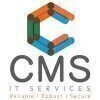Filter interviews by
VeeTechnologies Interview Questions and Answers
9 Interview questions
Client SLAs are agreements on service levels with clients, managed through monitoring, communication, and continuous improvement.
Client SLAs are defined in terms of response times, resolution times, uptime guarantees, etc.
Monitoring SLAs through regular reports and dashboards to track performance against targets.
Communication with clients regarding SLA status, any deviations, and actions taken to address them.
Cont...
Not a medical necessity refers to a treatment or service that is not required for the patient's health or well-being.
Not a medical necessity means the treatment or service is not essential for the patient's health.
Insurance companies may not cover treatments that are not considered medically necessary.
Examples include cosmetic procedures, elective surgeries, and experimental treatments.
Out of pocket refers to expenses paid by an individual that are not reimbursed by insurance or other sources.
Out of pocket expenses are costs that are paid directly by the individual, without reimbursement.
These expenses can include deductibles, copayments, and coinsurance for medical services.
Out of pocket costs can also include expenses for services or products not covered by insurance.
Individuals may have to pa...
Authorization is the process of obtaining permission to access or use a resource.
Authorization involves verifying the identity of a user and determining what actions they are allowed to perform.
Examples of authorization include logging into a website with a username and password, or granting specific permissions to a user in a system.
Authorization is often used in security systems to control access to sensitive in...
Implementing flexible work arrangements, enhancing communication and support, providing professional development opportunities, and recognizing and rewarding employees.
Implement flexible work arrangements such as remote work or flexible hours to accommodate employees' needs and preferences.
Enhance communication and support by regularly checking in with employees, providing clear and transparent information about t...
Echocardiogram is a common diagnostic tool for heart failure.
Echocardiogram uses sound waves to create images of the heart's structure and function.
It can show the size of the heart chambers, how well the heart is pumping, and if there are any abnormalities.
Other diagnostic tools for heart failure include MRI, CT scan, and blood tests.
Examples: Echocardiogram, MRI, CT scan
Undiagnosed new problem with uncertain prognosis
Further diagnostic tests may be required
Consultation with specialists may be necessary
Patient education and support is important
Treatment plan should focus on managing symptoms and improving quality of life
Acute illnesses with systemic symptoms are conditions that affect the whole body and have a sudden onset.
Common examples include influenza, sepsis, and meningitis.
Symptoms may include fever, chills, fatigue, and body aches.
Treatment may involve supportive care, such as rest and fluids, and medication to manage symptoms.
Prompt medical attention is important to prevent complications and improve outcomes.
The number of problems addressed depends on the patient's condition and treatment plan.
The number of problems addressed varies from patient to patient
It depends on the severity of the patient's condition
The treatment plan also plays a role in the number of problems addressed
For example, a patient with diabetes may have multiple problems addressed such as blood sugar control, foot care, and eye exams
VeeTechnologies Interview Experiences
94 interviews found
(2 Questions)
- Q1. Tell about yourself
- Q2. Python selenium
(2 Questions)
- Q1. Write a query for to get emp info under the managers
- Q2. Write a query for to get product info from order table
- Ans.
Query to retrieve product info from order table
Use SELECT statement to retrieve data
Join order table with product table using product ID
Include necessary columns like product name, price, etc.
I applied via Walk-in and was interviewed in Aug 2024. There were 2 interview rounds.
(1 Question)
- Q1. From anatomy and physiology. Deep questions.
(6 Questions)
- Q1. Medical term of kidney
- Q2. What is Shin? .
- Q3. What is Icd 10
- Q4. What is Pineal gland?
- Q5. About yourself and family details.
- Q6. Pupil. Where and explain.
Interview Preparation Tips
I applied via Walk-in and was interviewed in Sep 2024. There were 3 interview rounds.
(2 Questions)
- Q1. Just HR explains roles and responsibility
- Ans.
HR explains roles and responsibilities to new employees
HR provides an overview of the job duties and expectations
HR clarifies reporting structure and chain of command
HR outlines company policies and procedures
HR discusses performance evaluations and career development opportunities
- Q2. Are you ok with shift
- Ans.
Yes, I am okay with shift work and have experience working various shifts.
I am flexible with my schedule and have no issues working different shifts.
I have previous experience working evening and night shifts in my previous job.
I understand the importance of being available during different hours to accommodate clients or customers.
Ready for any topic except personal story like school and college life.
(2 Questions)
- Q1. General conversation with Manager.
- Q2. English Communication must.
Interview Preparation Tips
# GD round
(4 Questions)
- Q1. What is capitation
- Q2. What is a offset
- Ans.
An offset is a deduction or credit applied to an account to balance out a debt or obligation.
An offset is used to reduce or eliminate a debt owed by applying a credit from another source.
Offsets are commonly used in accounts receivable to reconcile payments and outstanding balances.
For example, if a customer returns a product and receives a credit, that credit can be used as an offset against their outstanding balance.
...
- Q3. What is out of pocket
- Ans.
Out of pocket refers to expenses paid by an individual that are not reimbursed by insurance or other sources.
Out of pocket expenses are costs that are paid directly by the individual, without reimbursement.
These expenses can include deductibles, copayments, and coinsurance for medical services.
Out of pocket costs can also include expenses for services or products not covered by insurance.
Individuals may have to pay out...
- Q4. Explain not a medical necessity
- Ans.
Not a medical necessity refers to a treatment or service that is not required for the patient's health or well-being.
Not a medical necessity means the treatment or service is not essential for the patient's health.
Insurance companies may not cover treatments that are not considered medically necessary.
Examples include cosmetic procedures, elective surgeries, and experimental treatments.
Skills evaluated in this interview
I appeared for an interview in May 2025, where I was asked the following questions.
- Q1. What are the abbreviations of CVS?
- Q2. What are the functions of the kidneys?
Interview Preparation Tips
I applied via Walk-in and was interviewed in Sep 2024. There was 1 interview round.
(2 Questions)
- Q1. Recent update in ICD 10
- Q2. What's your last project guidline
Interview Preparation Tips
I applied via Walk-in and was interviewed in Jun 2024. There were 2 interview rounds.
That was very general , we discussed regarding 2 topics one was Indian education system versus other countries and the second topic was youngsters mental health in this generation
(3 Questions)
- Q1. Why do you choose this job
- Q2. What you know about this field
- Q3. Self introduction
(2 Questions)
- Q1. Tell me about yourself and why you want to join Vee.
- Ans.
Experienced leader with a passion for driving team success, interested in joining Vee for its innovative approach to business.
10+ years of leadership experience in retail industry
Track record of improving team performance and exceeding targets
Excited about Vee's focus on technology and customer experience
Looking for new challenges and opportunities for growth
- Q2. Why you want to leave your current job almost after completing 5 years
- Ans.
Seeking new challenges and opportunities for growth after achieving milestones in current role.
Looking for new challenges and opportunities for growth
Want to expand my skill set and experience in a different environment
Feel ready for a new chapter in my career after achieving milestones in current role
I appeared for an interview in Apr 2025, where I was asked the following questions.
- Q1. Work details, data entry
- Q2. Benefits, amount no
Interview Preparation Tips
I appeared for an interview in Dec 2024, where I was asked the following questions.
- Q1. Self introduction
- Q2. Office boy work time
- Q3. Office boy work
- Q4. Office maintenance
- Q5. Monthly payment
- Q6. Office work experience
- Ans.
I have experience in various office tasks, including filing, data entry, and customer service, ensuring smooth daily operations.
Managed filing systems to ensure easy access to documents, improving efficiency.
Performed data entry tasks with high accuracy, contributing to reliable record-keeping.
Assisted in customer service by answering inquiries and directing calls, enhancing client satisfaction.
Coordinated office suppl...
- Q7. Office location
- Q8. Uniform maintenance
- Q9. Extra qualifications
- Q10. Language tamil or English
- Ans.
Speaking language tamil or English
- Q11. Handling customer
- Q12. Over all work performance
- Ans.
Cashbook maintenance and pill collection or office maintenance
- Q13. Management office environment
- Q14. Leadership ouality
- Q15. Sincerity and honestly
- Q16. Over customer request
- Q17. Opening stop working
- Q18. Office all cleaning
Top trending discussions






VeeTechnologies Interview FAQs
The duration of VeeTechnologies interview process can vary, but typically it takes about less than 2 weeks to complete.
Tell us how to improve this page.
VeeTechnologies Interviews By Designations
- VeeTechnologies Medical Coder Interview Questions
- VeeTechnologies Trainee Medical Coder Interview Questions
- VeeTechnologies Medical Coding Interview Questions
- VeeTechnologies Senior Design Engineer Interview Questions
- VeeTechnologies Accounts Receivable Caller Trainee Interview Questions
- VeeTechnologies Senior AR Caller Interview Questions
- VeeTechnologies Software Developer Interview Questions
- VeeTechnologies Recruitment Manager Interview Questions
- Show more
Interview Questions for Popular Designations
Overall Interview Experience Rating
based on 99 interview experiences
Difficulty level
Duration
Interview Questions from Similar Companies
VeeTechnologies Reviews and Ratings
based on 894 reviews
Rating in categories
|
Medical Coder
550
salaries
| ₹1.1 L/yr - ₹6.5 L/yr |
|
Senior Medical Coder
384
salaries
| ₹2.3 L/yr - ₹5.5 L/yr |
|
AR Caller
263
salaries
| ₹1.5 L/yr - ₹5 L/yr |
|
Senior AR Caller
186
salaries
| ₹2.4 L/yr - ₹5.2 L/yr |
|
Quality Analyst
170
salaries
| ₹2.4 L/yr - ₹6.1 L/yr |

ITC Infotech

CMS IT Services

KocharTech

Xoriant
- Home >
- Interviews >
- VeeTechnologies Interview Questions















